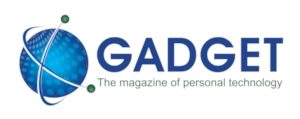Featured
Icasa finally issues emergency spectrum to mobile networks
More than 3 weeks after government promised to issue emergency spectrum to help cope with lockdown, it finally delivered, writes ARTHUR GOLDSTUCK
Share
- Click to share on Twitter (Opens in new window)
- Click to share on Facebook (Opens in new window)
- Click to share on LinkedIn (Opens in new window)
- Click to email a link to a friend (Opens in new window)
- Click to share on Reddit (Opens in new window)
- Click to share on WhatsApp (Opens in new window)
- Click to share on Pinterest (Opens in new window)
The communications industry regulator, the Independent Communications Authority of SA (Icasa), has delivered good news and bad news to South African mobile operators and their customers.
The good news is that it has issued temporary radio frequency spectrum to the major operators as well as several specialist service providers. The bad news is that, even under conditions of unprecedented urgency, it took more than three weeks to allocate what has been termed “emergency” spectrum.
The suspended Minister of Communications, Stella Ndabeni-Abrahams, announced on 25 March – the day before lockdown was due to commence – that government had instructed Icasa to issue temporary spectrum to operators to expand the network during the nationwide lockdown.
“The authority must prioritise the regulatory framework applicable to the management and licensing of radio frequency spectrum that would enable implementation of this direction on an urgent basis,” she declared.
However, there was little hope that the urgency in the announcement would be matched by urgency in spectrum allocation.
As far back as September 2018, the president declared that government would take “swift action” on the licensing of high-demand spectrum, and in February 2019 Finance Minister Tito Mboweni promised in his budget speech to “work relentlessly” with the Minister of Communications to ensure urgent allocation of spectrum. Policy direction was only issued by the Minister in July, and the current promise is that spectrum will be issued by the end of this year.
With the government presiding over such regulatory sloth, how could we expect any true urgency in emergency spectrum allocation? In the same way that it is already more than 18 months since “swift action” was promised on spectrum allocation, the urgent issuing of spectrum announced at the start of lockdown has only come into effect after the end of the original lockdown period.
That said, the spectrum will still be a valuable addition to the arsenal being arrayed against the impact of COVID-19 on the economy.
Most significantly, Icasa required that all recipients of temporary spectrum “support and create virtual teaching and classrooms”, in line with requirements to be determined by the Department of Basic Education and the Department of Communications during the National State of Disaster.
Icasa said in its statement: “The Authority exercised extreme care in the assignment of this temporary spectrum to existing licensees in order to achieve the objectives of the COVID-19 Regulations which are aimed at alleviating network challenges, easing congestion and ensuring good quality of service for consumers. In most of these assignments, applicants were granted additional spectrum as applied for. However, there are a few exceptional cases where the Authority had to apply practical and non-discriminatory principles to ensure that no licensee is prejudiced.”
Icasa announced it had considered applications for temporary radio frequency spectrum assignments in the 700MHz, 800MHz, 2300MHz, 2600MHz and 3500MHz bands, including the use of Television Whitespaces (TVWS), in an effort to ensure connectivity for all during the National State of Disaster period.
However, of 35 applications received, only half – 17 – were found to be in line with required criteria and conditions, such as providing a network performance report before the COVID-19 outbreak, as well as modelled network performance with the additional spectrum requested.
Read more on the next page about which networks have been allocated spectrum.
Share
- Click to share on Twitter (Opens in new window)
- Click to share on Facebook (Opens in new window)
- Click to share on LinkedIn (Opens in new window)
- Click to email a link to a friend (Opens in new window)
- Click to share on Reddit (Opens in new window)
- Click to share on WhatsApp (Opens in new window)
- Click to share on Pinterest (Opens in new window)
Pages: 1 2
| Thank you for Signing Up |














